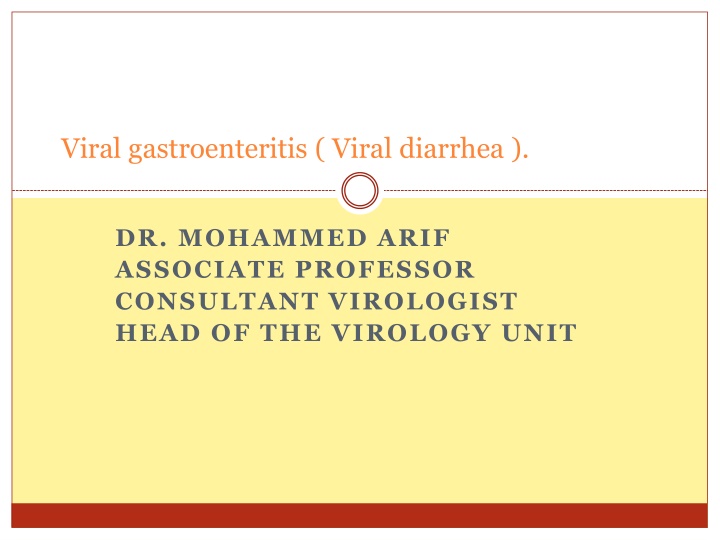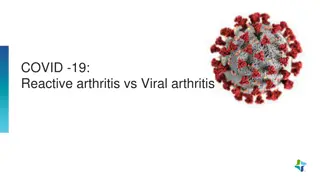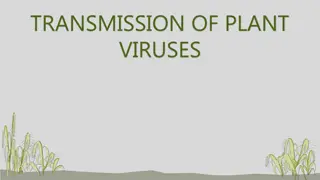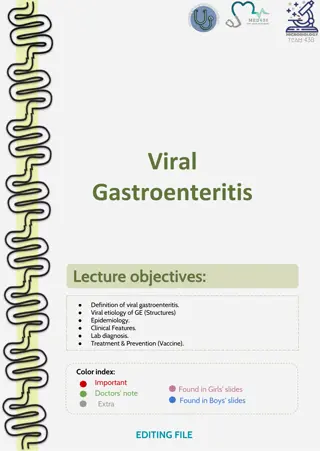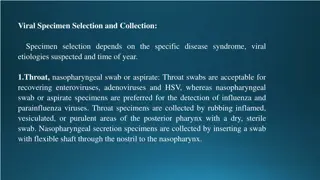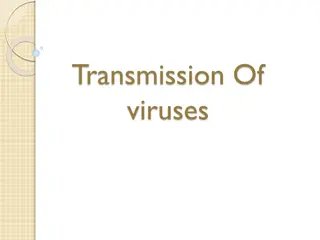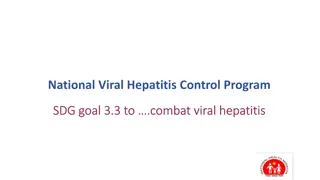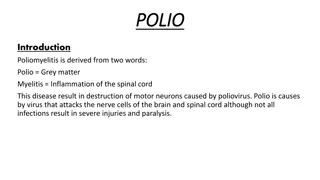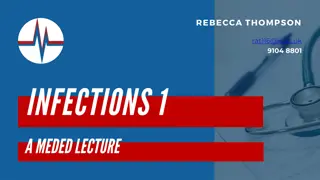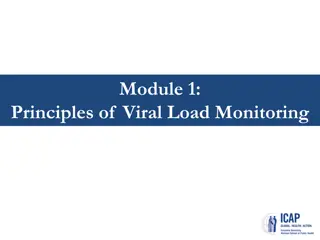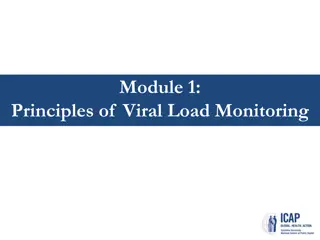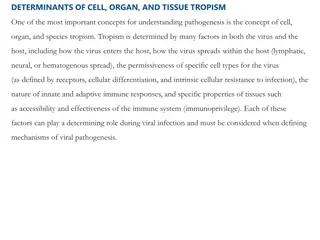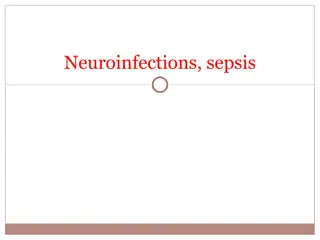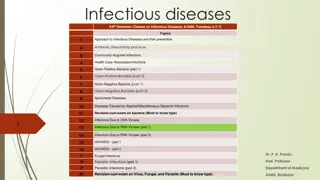Viral Gastroenteritis: Causes, Symptoms, and Transmission
Viral gastroenteritis, commonly known as viral diarrhea, is a prevalent infection affecting mainly infants and young children. The disease is self-limiting, with symptoms like diarrhea, vomiting, and abdominal pain. Key viral etiologies include Rota viruses, Astroviruses, Norovirus, and Enteric adenoviruses. Transmission occurs through contaminated hands, uncooked food, and water. Understanding these viruses and their modes of transmission is crucial for prevention and management.
Download Presentation

Please find below an Image/Link to download the presentation.
The content on the website is provided AS IS for your information and personal use only. It may not be sold, licensed, or shared on other websites without obtaining consent from the author.If you encounter any issues during the download, it is possible that the publisher has removed the file from their server.
You are allowed to download the files provided on this website for personal or commercial use, subject to the condition that they are used lawfully. All files are the property of their respective owners.
The content on the website is provided AS IS for your information and personal use only. It may not be sold, licensed, or shared on other websites without obtaining consent from the author.
E N D
Presentation Transcript
Viral gastroenteritis ( Viral diarrhea ). DR. MOHAMMED ARIF ASSOCIATE PROFESSOR CONSULTANT VIROLOGIST HEAD OF THE VIROLOGY UNIT
Viral diarrhea . The second most common infection after the respiratory tract . Mainly disease of infants and young children . Mostly self limiting disease. Recovery is usual . Diarrhea, vomiting and abdominal pain are the major symptoms. Viruses causing diarrhea replicate in the epithelial cells of the small intestine and shed freely in stools.
Viral etiology Rota viruses (reoviridae), the major cause of infantile diarrhea. Enteric adenoviruses types 40 & 41 (adenoviridae). Astroviruses (astroviridae). Norovirus (caliciviridae). Sapovirus (caliciviridae) .
Rota viruses Family: Reoviridae. Icosahedral particles , 20-30 nm in diameter. Unenveloped. Two icosahedral capsids (wheel like). The viral genome is ds-RNA, 11 segments. Replicate in the cytoplasm. They infect epithelial cells in the small intestine. The major cause of diarrhea in infants & young children.
Astroviruses Family: Astroviridae. Icosahedral particles, 30-40 nm in diameter. Unenveloped. The viral genome is ss-RNA, plus strand. Cause diarrhea in infants and children .
Noroviruses ( Norwalk virus ) & sapovirus . Family: Caliciviridae . Genus : norovirus ( 1968 ) . Genus : sapovirus ( !977) . Icosahedral particles, 30-40 nm in diameter, with cup- shaped depressions. Unenveloped. The viral genome is ss-RNA, plus strand. Cause diarrhea in all age groups.
Adenoviruses Family: Adenoviridae. Icosahedral particles, 60-70 nm in diameter. 12-fibres one at each vertix. The viral genome is ds-DNA. Replicate in the nucleus. 49 distinct types, grouped into 6-subgenera (A-F). Cause diarrhea in infants and young children .
Transmission By the fecal oral route: Person to person through contaminated hands. Eating uncooked fruits and vegetables contaminated with infectious fecal material. Drinking water contaminated with infectious fecal material. Contamination of uncooked food, fruits and salads by food handlers.
Target group: Mainly infants and young children . Norovirus affects all age groups , often occurs in closed or semi-closed communities, such as hospitals, dormitories, prisons , etc.
Endemicity. Viruses that are transmitted by the fecal oral route are endemic in areas with: Low standard of hygiene and sanitation. Primitive sewage system. No adequate water pipe-line system. Crowded living condition. Low educational level.
Pathogenesis . These viruses replicate in the epithelial cells lining the small intestine ( enterocytes ). They replicate at the tips of the villi ( mature cells ), causing destruction of these cells . They do not replicate in the crypt . As a result, maladsorption of fluids and electrolytes occurs .
Clinical features IP , 1-3 days. The main symptoms are: diarrhea, vomiting, nausea, abdominal cramping and pain, fever. Duration: 2-7 days. Prognosis: in the absence of dehydration, the disease is mild and recovery is usual. Complications: dehydration.
Treatment By replacement of fluids and electrolytes lost by diarrhea. Children with diarrhea who are unable to take fluids by mouth because of nausea and vomiting may need interavenous fluids
Prevention measures Washing hands with soap and water before preparing food and eating. Washing hands with soap and water after toilet and changing diapers. Disinfection of contaminated surfaces , such as toilets, carpet, floors, etc.
Laboratory diagnosis By detection of these viruses in stool, using EIA. These viruses shed freely in stool.
Rotavirus vaccine. Live attenuated , oral vaccine. Administered in two doses. First dose at age of 2- months. Second dose at age of 4- months
